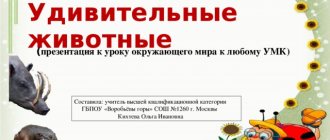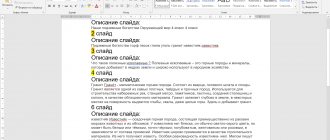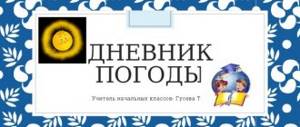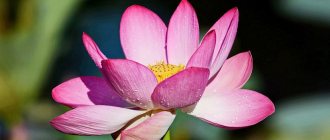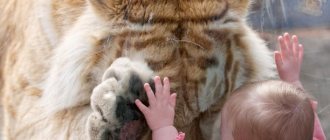Politicians and military leaders
During the hard times of war and other troubled times, situations often arose in which the fate of Russia depended on the political will and military talent of individuals. Among those who had a huge influence on the course of not only Russian but also world history, we can highlight the names of several patriotic people:
- Kuzma Minin;
- Dmitry Pozharsky;
- Alexander Vasilievich Suvorov;
- Georgy Konstantinovich Zhukov;
- Peter I.
Dmitry Pozharsky and Kuzma Minin
During the period of Polish intervention at the beginning of the 17th century, called by historians the “time of troubles,” a situation was created in which the level of popular discontent with the reigning atrocities became critical. The monks of the Holy Trinity Monastery issued a call for the unification of the entire Russian people in the name of saving the Motherland. The population of Nizhny Novgorod was the first to respond to the call, giving the Fatherland leaders of the people's militia who led the people's resistance to the Polish invaders.
The Russian merchant Minin not only called people to armed struggle, but also donated personal property and savings to its organization. The people's militia was headed by the Nizhny Novgorod governor, Prince Pozharsky, famous for his courage and bravery.
Peter the First
The Tsar and subsequently the first Emperor of Russia, Peter the Great , was a Russian autocrat nicknamed the Great. During his 43 years of rule, he reformed the army and created a combat-ready fleet from scratch. Peter significantly expanded the borders of the empire, founded the future Russian capital of St. Petersburg at the mouth of the Neva, and revived and developed trade with European states.
Peter I founded the Russian Academy of Sciences and opened many educational institutions. Voltaire gave the most objective assessment of the merits of the reformer tsar, who said that within half a century Russia had achieved what other states had not been able to achieve in 500 years.
Alexander Vasilievich Suvorov
Generalissimo, founder of the theory of Russian military art. Knight of many foreign and all Russian orders that existed in his time. The greatness of his patriotic contribution to the history of the Russian state is evidenced by the fact that, under the leadership of A. Suvorov, the Russian army fought more than 60 battles. And despite the fact that in each of them the enemy had a numerical superiority, the military genius of Suvorov invariably celebrated victory.
Georgy Konstantinovich Zhukov
Soviet commander, marshal, participant in five wars: World War I, Civil, Finnish, Great Patriotic War and Japanese. The invaluable contribution of Georgy Zhukov to the victory of the Soviet people over German fascism is expressed in the nickname given to the beloved military leader by the people - “Marshal of Victory.”
Zhukov's services in liberating the country are highly appreciated by his homeland; he is the only four-time Hero of the Soviet Union in the world, a holder of two Orders of Victory, six highest state awards - the Order of Lenin and many other Soviet and foreign insignia.
Volga class
Russian Federation
The Russian Federation stretches from the Arctic Ocean to the steppes of Kazakhstan, from the Baltic Sea to the Pacific Ocean.
The capital is the city of Moscow.
Russia is a multinational country, more than 100 peoples live in it: Russians, Maris, Chuvashs, Bashkirs, Udmurts, Buryats and others.
Coat of arms of Russia. A golden double-headed eagle is depicted on a red shield. The eagle clutches the scepter with its right paw. In his left paw is a power. We see crowns above the eagle's heads. The scepter is a wand decorated with intricate carvings, gold and precious stones. The orb is a golden ball with a cross on top. In ancient times, the crown, scepter and orb served as signs of royal power. Today they remind us of the historical past of our Motherland and symbolize the unity of the Russian Federation and its independence from other states. You need to pay attention to the eagle's wings. They look like the rays of the sun, and the golden bird itself looks like the Sun.
In ancient Russian songs and fairy tales it was said that the Sun rides across the sky during the day in a golden chariot harnessed by a pair of winged horses and birds. The image of the solar chariot has been preserved in folk art and Russian embroidery. Why do horses and birds have two heads? Why does the Dymkovo whistle “Troika” have three heads? Of course, this is not a bird with two heads, but two birds, not a horse with three heads, but three horses. In folk art, the image is simplified, and the master shows us some of the most characteristic details.
On the eagle's chest there is a red shield with the image of a horseman. This is Saint George the Victorious. He is on a white horse, a blue cloak flutters behind his shoulders, and in his right hand he has a silver spear, which helped him defeat the dragon. The terrible black snake is a symbol of evil. He is defeated by a hero. The warrior's faithful horse tramples the dragon with its hooves.
The coat of arms of Russia symbolizes beauty and justice, the victory of good over evil.
St. George the Victorious was revered as a hero and as the patron saint of warriors, defenders of the Fatherland. He was often depicted on icons.
In ancient times, grandparents told their grandchildren a story very similar to a fairy tale about Yegoria, the princess and the snake.
“In a certain kingdom-state, a great misfortune happened: a fierce serpent-dragon attacked the people. He settled in a dark cave on the seashore. He burned the earth with fire and destroyed houses. The inhabitants of that kingdom-state prayed. The snake demanded that he be fed fresh meat every day. But the monster was voracious, and soon no one had any sheep, cows, or goats left. The serpent ordered that a person be brought to him every day to be devoured. They cast lots, and it fell to the king's daughter to go. They brought her to the seashore and left her there. At this time, Yegor the Brave was passing by on a good horse. He could not leave the princess in trouble, he fought with the snake and defeated him.
Flag of Russia. The modern flag and coat of arms, despite their ancient origins and long history, were recreated recently, about 10 years ago. Before this, our country was called the Russian Soviet Federative Socialist Republic (RSFSR). It was one of the republics of a huge state - the Union of Soviet Socialist Republics (USSR).
When Tsar Alexei Mikhailovich, nicknamed the Quietest, ruled in Russia, on his orders, several ships began to be built in the village of Dedinovo near Moscow, on the Oka River. The main and largest ship was proudly named “Eagle”. There were 22 guns on board. A warship was needed to protect merchant ships sailing along the Volga River and the Caspian Sea. And for a warship, an identification mark was required - a flag. The white-blue-red flags and pennants of this small flotilla indicated that it belonged to the Russian state. Why did the king choose a combination of white, blue and red colors? Perhaps he used the ancient coat of arms of the Moscow princes: white - St. George the Victorious; blue - the rider's flowing cloak; red is the background, the color of the coat of arms. The image of a horseman slaying a black dragon with a spear means the victory of justice and good over evil.
Both in those days and now, color is given a special meaning. White color means peace, purity; blue – sky, fidelity, truth; red – fire, courage.
Orthodox Christians saw the structure of the world in the arrangement of the stripes of the banner. Above is the divine world, white heavenly color; below is the blue firmament, and below it is the red sky - the world of people.
Anthem of the Russian Federation (music by A.V. Alexandrov, lyrics by S.V. Mikhalkov) :
| 1. Russia is our sacred power, Russia is our beloved country. Mighty will, great glory - Your heritage for all time! Chorus: Glory, Our free Fatherland, An age-old union of fraternal peoples, The people's wisdom given by our ancestors! Hail, country, We are proud of you! | 2. Our forests and fields stretch from the southern seas to the Arctic Circle. You are the only one in the world! You are the only one - God-protected native land! Chorus.3. Wide scope for dreams and for life The coming years open up for us. Our loyalty to the Fatherland gives us strength. So it was, so it is and so it will always be! Chorus. |
Liked? Rate it!

